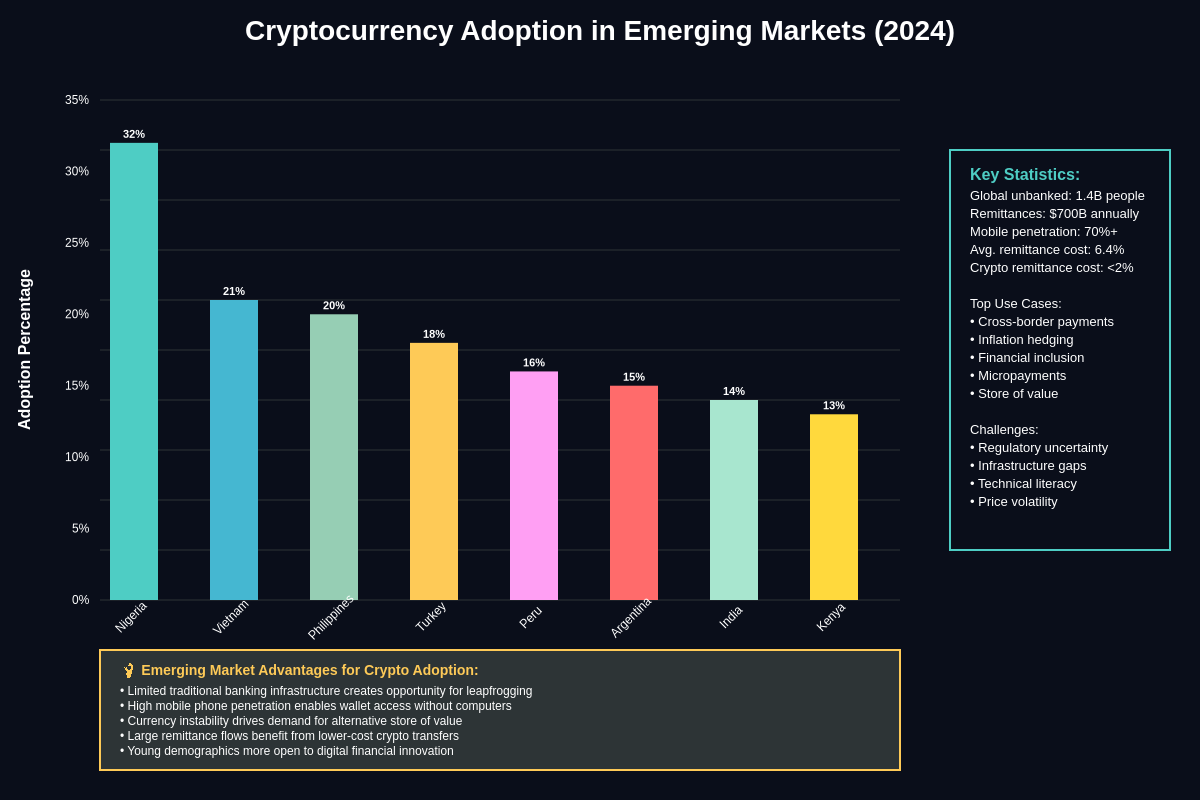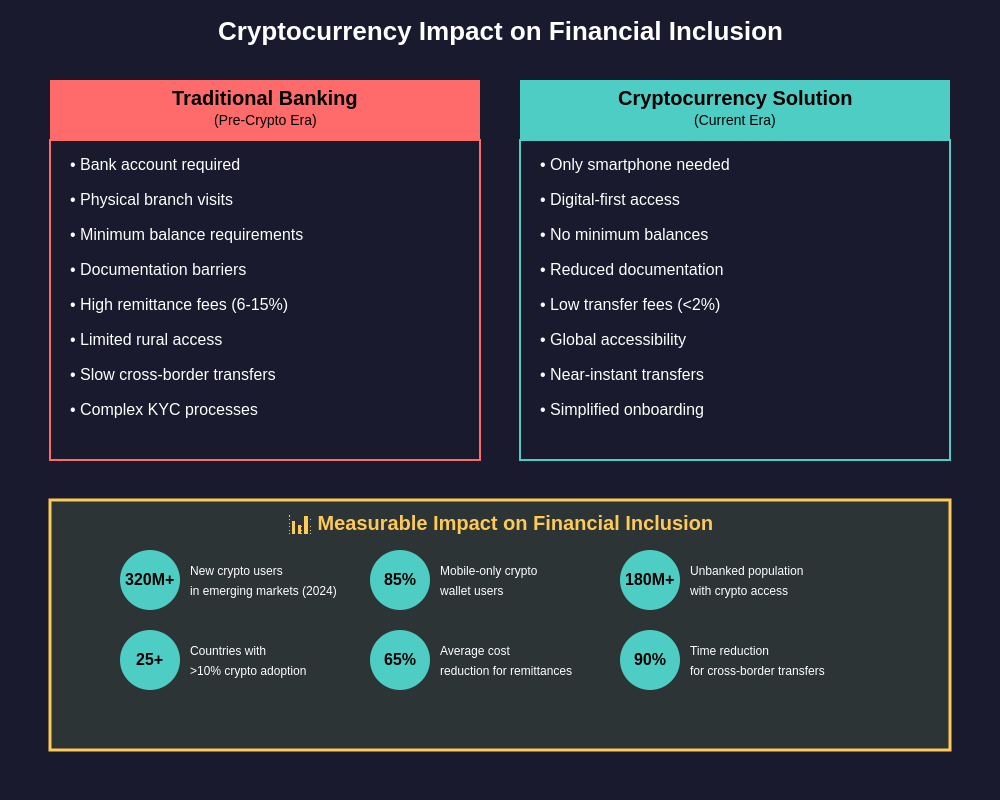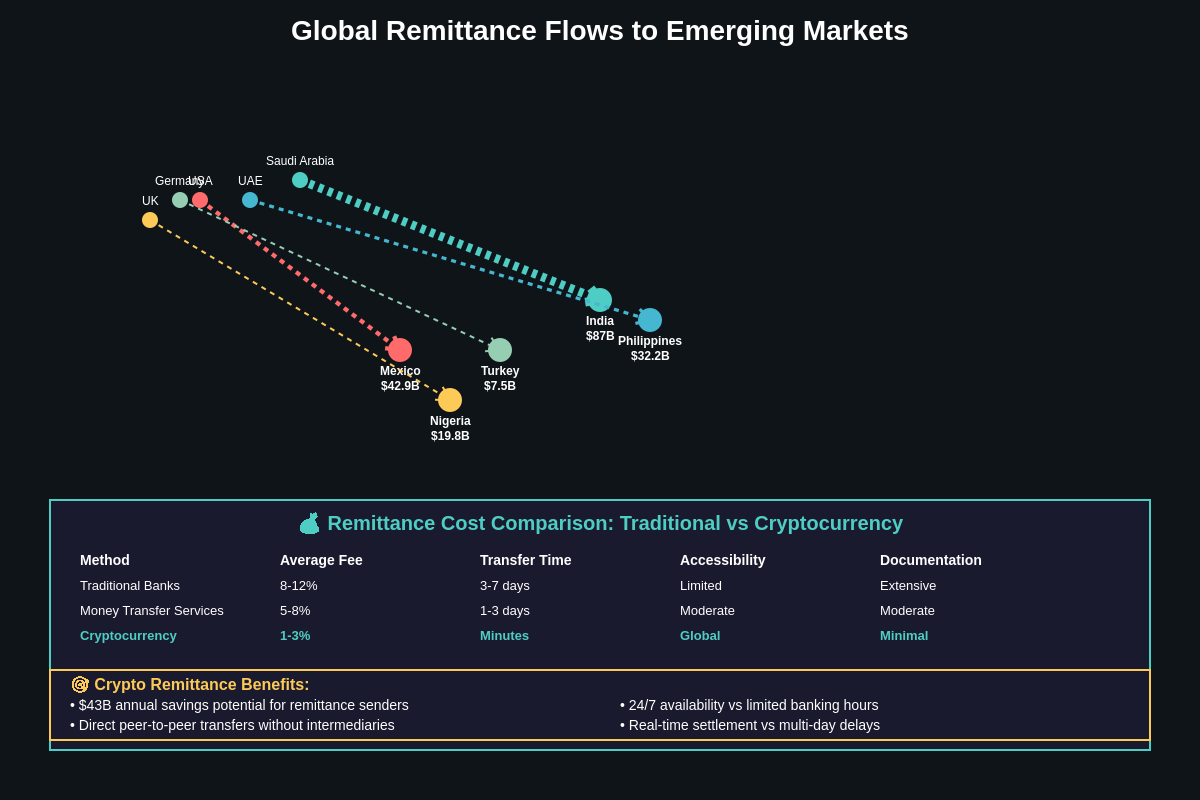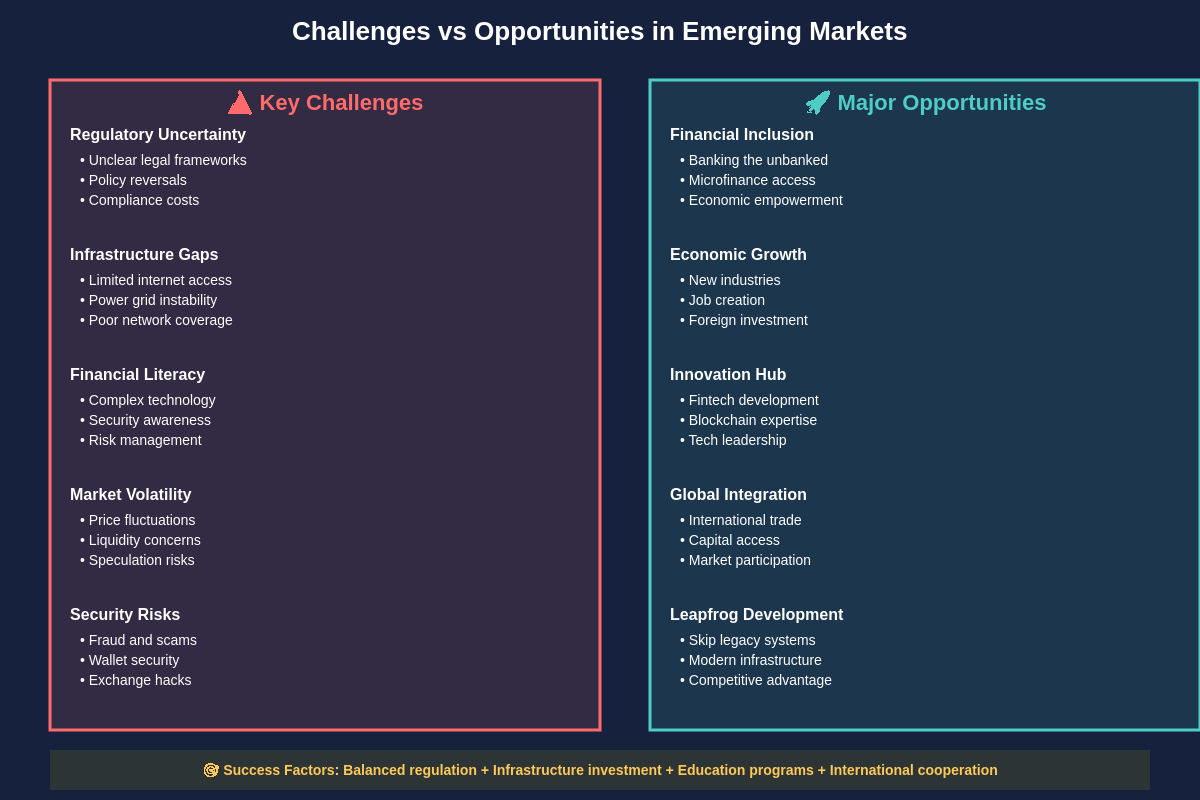https://www.tradingview.com/pine-script-reference/v6/?aff_id=112991&source=pine-13-tradingview
Digital Financial Revolution in Developing Economies
Cryptocurrency has emerged as a transformative force in emerging markets, offering unprecedented opportunities for financial inclusion, economic stability, and technological advancement in regions where traditional banking infrastructure remains inadequate or inaccessible. These digital assets are reshaping the economic landscape of developing nations by providing alternative pathways to financial services, cross-border payments, and wealth preservation that bypass conventional monetary systems and their inherent limitations.
The adoption of cryptocurrency in emerging markets represents more than just technological innovation; it embodies a fundamental shift toward financial democratization that empowers individuals and businesses previously excluded from formal financial systems. From remittance corridors connecting migrant workers to their families to small businesses seeking access to global markets, cryptocurrency is breaking down barriers that have historically perpetuated economic inequality and limited growth opportunities in developing regions.

Historical Context and Economic Challenges
Emerging markets have long struggled with systemic financial challenges that cryptocurrency technology is uniquely positioned to address, including hyperinflation, currency instability, limited banking access, and restrictive capital controls that constrain economic growth and individual prosperity. Traditional financial systems in many developing countries suffer from inadequate infrastructure, high transaction costs, regulatory inefficiencies, and exclusionary practices that leave significant portions of the population without access to basic financial services.
The economic volatility characteristic of many emerging markets, exemplified by cases such as Zimbabwe’s hyperinflation crisis, Venezuela’s currency collapse, and Turkey’s lira devaluation, has created environments where citizens increasingly view cryptocurrency as a more stable store of value than their national currencies. These economic disruptions have accelerated cryptocurrency adoption as individuals and businesses seek alternatives that offer greater predictability and protection against monetary policy failures and political instability.
Historical precedents demonstrate how monetary crises in emerging markets create opportunities for alternative financial systems to gain traction, with cryptocurrency representing the most technologically advanced and globally accessible option available to populations seeking financial stability. The decentralized nature of cryptocurrency networks provides resilience against local economic shocks and government interference, making them particularly attractive in regions where traditional financial systems have proven unreliable or susceptible to political manipulation.
Cryptocurrency Adoption Patterns and Statistics
Data from various cryptocurrency exchanges and research organizations reveals that emerging markets consistently rank among the highest in terms of cryptocurrency adoption rates, with countries like Nigeria, Vietnam, Philippines, Turkey, and India leading global adoption metrics according to TradingView’s cryptocurrency market analysis. These adoption patterns reflect both the pressing need for alternative financial solutions and the technological infrastructure necessary to support cryptocurrency usage in developing economies.
The demographics of cryptocurrency users in emerging markets differ significantly from those in developed countries, with younger populations, higher mobile device penetration, and greater reliance on peer-to-peer transactions driving adoption patterns that emphasize practical utility over speculative investment. Mobile-first cryptocurrency adoption in regions with limited traditional banking infrastructure has created unique usage patterns where cryptocurrency serves as a primary financial tool rather than an alternative investment vehicle.
Remittance flows represent one of the most significant drivers of cryptocurrency adoption in emerging markets, with traditional money transfer services often charging fees ranging from 5% to 15% of transaction values while requiring multiple intermediaries and extended settlement periods. Cryptocurrency-based remittance services can reduce these costs to under 2% while enabling near-instantaneous transfers, creating compelling value propositions for the millions of migrant workers who send money to families in their home countries.
Financial Inclusion and Banking the Unbanked
The World Bank estimates that approximately 1.4 billion adults globally remain unbanked, with the vast majority residing in emerging market economies where cryptocurrency technology offers unprecedented opportunities to extend financial services to previously excluded populations. Cryptocurrency wallets require only smartphone access and internet connectivity, eliminating the documentation requirements, minimum balance restrictions, and geographical limitations that prevent many individuals from accessing traditional banking services.
Mobile money services in countries like Kenya and Tanzania have demonstrated the potential for digital financial solutions to drive financial inclusion, with cryptocurrency representing the next evolutionary step that offers enhanced functionality, cross-border capabilities, and integration with global financial markets. The programmable nature of cryptocurrency enables the development of sophisticated financial products and services that can be tailored to the specific needs and constraints of emerging market populations.
Microfinance institutions and community-based financial organizations in emerging markets are increasingly integrating cryptocurrency technologies to enhance their service delivery, reduce operational costs, and expand their reach to previously inaccessible populations. Smart contract functionality enables automated lending protocols, savings programs, and insurance products that can operate efficiently at small transaction volumes while maintaining transparency and reducing administrative overhead.

Cross-Border Payments and Remittances
Traditional cross-border payment systems in emerging markets suffer from high costs, slow settlement times, limited accessibility, and complex regulatory requirements that create significant barriers for individuals and businesses seeking to participate in the global economy. Cryptocurrency networks operate independently of traditional correspondent banking relationships, enabling direct peer-to-peer transfers that bypass intermediary institutions and their associated fees and delays.
The remittance industry, worth over $700 billion annually according to World Bank data, represents one of the most immediate and impactful applications of cryptocurrency technology in emerging markets, where families depend on these transfers for essential needs including housing, education, healthcare, and business investment. Real-time cryptocurrency price tracking enables remittance senders and recipients to optimize transfer timing and minimize currency conversion costs.
Small and medium enterprises in emerging markets face particular challenges in accessing international payment systems, with traditional banking relationships often requiring significant minimum volumes, lengthy approval processes, and substantial documentation requirements that exclude many businesses from global commerce opportunities. Cryptocurrency-based payment systems enable these businesses to accept international payments, access global supply chains, and participate in e-commerce platforms that were previously inaccessible due to payment processing limitations.

Currency Stability and Hedging Against Inflation
Hyperinflation and currency devaluation represent existential threats to wealth preservation in many emerging markets, with recent examples including Venezuela’s inflation rate exceeding 1,000,000% annually, Zimbabwe’s currency collapse, and Turkey’s lira losing over 80% of its value against the US dollar in recent years. In these environments, cryptocurrency serves as a digital store of value that can preserve purchasing power more effectively than rapidly depreciating local currencies.
The concept of cryptocurrency as digital gold has particular resonance in emerging markets where access to traditional safe-haven assets like US dollars, precious metals, or foreign real estate is restricted by capital controls, foreign exchange regulations, or practical accessibility constraints. Bitcoin and other established cryptocurrencies provide 24/7 global market access that enables individuals to protect their wealth against local economic instability without requiring complex international banking relationships.
Stablecoins pegged to major international currencies offer another layer of currency stability for emerging market users, providing the benefits of cryptocurrency technology while maintaining price stability relative to established reserve currencies. These instruments enable users to maintain dollar-denominated savings accounts, conduct commerce in stable units of account, and hedge against local currency volatility without requiring access to traditional offshore banking services.
Government Responses and Regulatory Frameworks
Regulatory approaches to cryptocurrency in emerging markets vary dramatically, ranging from outright prohibition to active promotion as part of national digital transformation strategies, with most jurisdictions adopting pragmatic approaches that balance innovation potential with financial stability concerns. Countries like El Salvador and the Central African Republic have adopted Bitcoin as legal tender, while others like Nigeria and India have implemented more restrictive regulatory frameworks that limit but do not prohibit cryptocurrency usage.
Central Bank Digital Currencies (CBDCs) represent a significant development in emerging market cryptocurrency regulation, with many countries viewing national digital currencies as a way to capture the benefits of cryptocurrency technology while maintaining monetary policy control and regulatory oversight. The Bahamas, Nigeria, and Jamaica have already launched CBDC programs, while dozens of other emerging market countries are in various stages of CBDC development and testing.
The regulatory challenge for emerging market governments lies in balancing the legitimate benefits of cryptocurrency technology for financial inclusion and economic development against concerns about money laundering, tax evasion, capital flight, and monetary policy effectiveness. Progressive regulatory frameworks that provide clear guidelines while allowing innovation to flourish have generally produced better outcomes than blanket prohibitions that drive cryptocurrency activity underground without addressing underlying economic needs.
Technological Infrastructure and Mobile Adoption
The mobile-first technology infrastructure prevalent in many emerging markets provides an ideal foundation for cryptocurrency adoption, with smartphone penetration rates often exceeding traditional banking infrastructure availability and enabling leapfrog adoption of advanced financial technologies. Mobile network coverage and internet connectivity improvements across Africa, Asia, and Latin America have created the technological prerequisites for widespread cryptocurrency usage.
Cryptocurrency wallet applications designed specifically for emerging market conditions often incorporate features like offline transaction capability, SMS-based transfers, and integration with existing mobile money platforms to ensure accessibility in environments with limited internet connectivity or older smartphone technology. These adaptations demonstrate how cryptocurrency technology can be tailored to local infrastructure constraints while maintaining security and functionality.
The development of cryptocurrency exchange and trading platforms optimized for emerging market conditions has created local ecosystems that support peer-to-peer trading, local currency integration, and community-based adoption strategies that reflect the social and economic characteristics of developing economies. These platforms often emphasize education, customer support, and risk management features that help new users navigate cryptocurrency markets safely and effectively.
Economic Impact and Development Opportunities
Cryptocurrency adoption in emerging markets has generated measurable economic impacts including increased access to international markets, reduced transaction costs for cross-border commerce, enhanced financial inclusion metrics, and the development of new technology-based industries and employment opportunities. These effects contribute to broader economic development objectives while creating new pathways for individual and community prosperity.
The emergence of cryptocurrency-based industries in emerging markets, including mining operations, software development, trading services, and fintech innovation, has created new sources of employment and foreign exchange earnings that contribute to economic diversification and technological advancement. Countries like Kazakhstan, Iran, and Georgia have become significant cryptocurrency mining centers, while others like Nigeria and Vietnam have developed thriving cryptocurrency trading and fintech sectors.

Cryptocurrency technology has enabled new forms of international aid and development finance that can reach beneficiaries more efficiently and transparently than traditional mechanisms, with blockchain-based tracking and smart contract automation reducing administrative costs and improving accountability in development programs. These applications demonstrate the potential for cryptocurrency to enhance the effectiveness of international development efforts while empowering local communities with greater control over their economic resources.
Case Studies from Key Markets
Nigeria represents one of the most significant cryptocurrency adoption success stories in emerging markets, with survey data consistently ranking the country among the top three globally for cryptocurrency usage despite regulatory restrictions and banking sector opposition. Nigerian users have embraced cryptocurrency for remittances, e-commerce, and as a hedge against naira devaluation, creating a vibrant ecosystem of local exchanges, peer-to-peer platforms, and cryptocurrency-integrated businesses.
India’s cryptocurrency journey illustrates the complex regulatory dynamics that characterize many emerging markets, with initial skepticism and restrictions giving way to more nuanced policies that recognize the technology’s potential benefits while addressing legitimate regulatory concerns. The Indian cryptocurrency ecosystem has developed into one of the world’s largest, with millions of users and a thriving domestic industry despite regulatory uncertainty and policy changes.
Latin American countries including Argentina, Colombia, and Peru have experienced significant cryptocurrency adoption driven by currency instability, high inflation rates, and limited access to stable foreign currencies, with cryptocurrency market data showing consistent growth in trading volumes and wallet creation across the region. These markets demonstrate how economic necessity can drive cryptocurrency adoption even in the absence of supportive regulatory frameworks.
Challenges and Risk Factors
Despite the significant opportunities that cryptocurrency presents for emerging markets, substantial challenges remain including regulatory uncertainty, technical infrastructure limitations, cybersecurity risks, and the need for enhanced financial literacy and consumer protection measures. These challenges require coordinated responses from governments, industry participants, and international organizations to ensure that cryptocurrency adoption contributes positively to economic development objectives.
The volatility of cryptocurrency markets poses particular risks for emerging market users who may lack the financial resources to absorb significant losses or the investment experience to manage portfolio risk effectively. Educational initiatives and risk management tools specifically designed for emerging market conditions are essential to ensure that cryptocurrency adoption does not exacerbate existing economic vulnerabilities or create new sources of financial instability.
Cybersecurity risks in emerging markets are amplified by limited regulatory oversight, weaker consumer protection frameworks, and lower levels of technical literacy among users, creating opportunities for fraud, theft, and exploitation that can undermine confidence in cryptocurrency technology. Building robust security practices and regulatory frameworks requires significant investment in technical infrastructure and human capital development.
Future Prospects and Innovation Opportunities
The future of cryptocurrency in emerging markets will likely be shaped by continued innovation in areas including layer-2 scaling solutions, interoperability protocols, decentralized finance (DeFi) applications, and central bank digital currencies that address current limitations while expanding functionality and accessibility. These technological developments promise to enhance the utility and efficiency of cryptocurrency systems while reducing barriers to adoption.
Artificial intelligence and machine learning applications in cryptocurrency services offer particular promise for emerging markets, with potential applications including fraud detection, credit scoring, automated investment management, and personalized financial advisory services that can serve populations with limited access to traditional financial expertise. These technologies can help democratize sophisticated financial services while reducing operational costs and improving risk management.
The integration of cryptocurrency technology with other emerging technologies including Internet of Things (IoT) devices, 5G networks, and satellite internet services could create new opportunities for financial inclusion and economic development in remote and underserved regions of emerging markets. These convergent technologies may enable entirely new business models and economic structures that were previously impossible with traditional financial infrastructure.
Policy Implications and Recommendations
Effective cryptocurrency policy in emerging markets requires balanced approaches that recognize both the legitimate benefits and risks associated with digital asset adoption, with regulatory frameworks that provide clarity and consumer protection while preserving space for innovation and financial inclusion. International cooperation and knowledge sharing can help emerging market governments develop appropriate regulatory responses based on global best practices and local conditions.
Financial literacy and consumer education programs specifically designed for cryptocurrency users in emerging markets are essential to ensure that adoption occurs safely and productively, with particular attention to risk management, security practices, and understanding of market dynamics. These programs should be integrated with broader financial inclusion initiatives and delivered through accessible channels including mobile applications, community organizations, and educational institutions.
The development of appropriate taxation frameworks for cryptocurrency transactions in emerging markets requires careful consideration of enforcement capabilities, economic development objectives, and international coordination to prevent regulatory arbitrage while ensuring that governments can capture appropriate revenue from cryptocurrency-related economic activity. These frameworks should balance revenue generation with the need to support financial inclusion and innovation.
https://www.tradingview.com/pine-script-reference/v6/?aff_id=112991&source=pine-13-tradingview
Conclusion
Cryptocurrency represents a paradigm shift in how emerging market economies can approach financial inclusion, economic stability, and international integration, offering solutions to longstanding challenges while creating new opportunities for individual prosperity and national development. The success of cryptocurrency adoption in these markets will depend on continued technological innovation, appropriate regulatory frameworks, and coordinated efforts to address the challenges and risks associated with this transformative technology.
The evidence from early adopting countries demonstrates that cryptocurrency can deliver significant benefits for emerging market populations when implemented thoughtfully and supported by appropriate infrastructure and regulatory frameworks. As the technology continues to evolve and mature, its impact on emerging market economies is likely to become even more profound, potentially reshaping the global financial system in ways that better serve the needs of developing economies and their populations.
The journey toward widespread cryptocurrency adoption in emerging markets will require continued collaboration between governments, industry participants, international organizations, and local communities to ensure that the benefits of this technology are realized while minimizing associated risks and challenges. The stakes of this transformation are significant, with the potential to either accelerate economic development and financial inclusion or to exacerbate existing inequalities if not managed carefully.
https://www.tradingview.com/pine-script-reference/v6/?aff_id=112991&source=pine-13-tradingview
Disclaimer: This article is for informational purposes only and does not constitute financial advice. Cryptocurrency investments carry significant risks, including the potential for total loss of capital. The regulatory environment for cryptocurrencies varies by jurisdiction and continues to evolve. Readers should conduct their own research and consult with qualified financial advisors before making any investment decisions. Past performance does not guarantee future results, and the volatile nature of cryptocurrency markets can result in substantial gains or losses. Always invest responsibly and only with funds you can afford to lose.